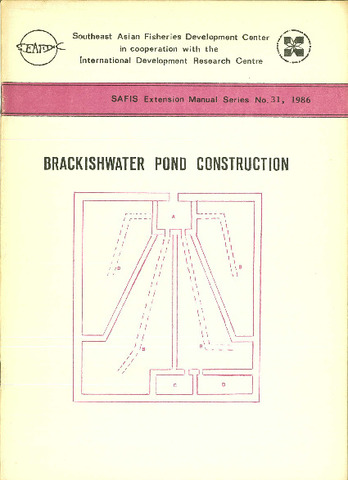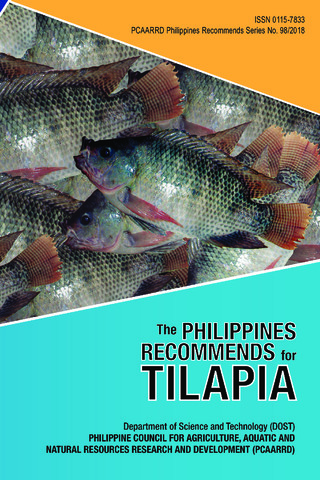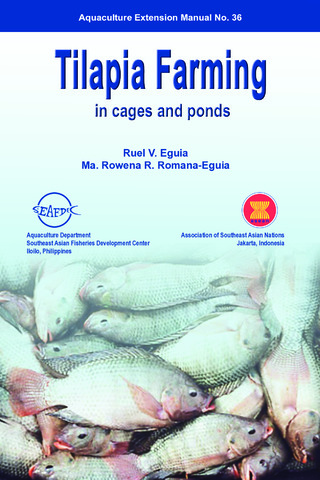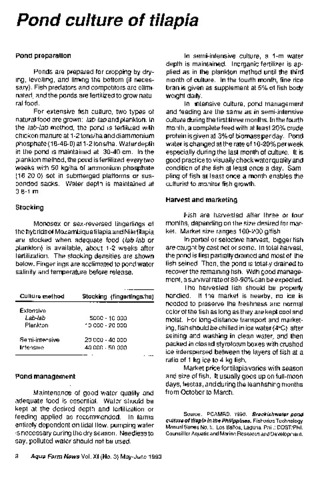Brackishwater pond construction
Share
Abstract
The success of aquaculture in brackish-water ponds depends largely on the conditions in the area, and on pond construction and management. To avoid difficulties that would affect the profitability of the enterprise, these three points should be given careful consideration from the time the site is selected until construction of the brackishwater ponds is completed. Sometimes, water management problems take place after the brackishwater ponds are completed. These are caused by poor site selection, i.e., the elevation of the pond area was too high, or tidal fluctuation was too low for proper pond management. At times, the pond could not be properly filled because of faulty construction and leakage around a sluice gate or along the main dike.
To avoid such problems, this manual gives advice to fish farmers who intend to construct brackishwater ponds. This will also be useful to instructors and extension workers on brackishwater pond management.
Description
"Brackishwater Pond Construction" was originally published in Bahasa Indonesia in 1981 by the Directorate General of Fisheries (DGF) in Jakarta Indonesia under the title, Pedoman Tehnis Pembuatan Tambak. This is an English translation prepared by Mr. Suharyadi Salim, affiliated with DGF for the SAFIS project.
This manual has been adapted and edited by the SEAFDEC Secretariat.
Suggested Citation
SEAFDEC. (1986). Brackishwater pond construction (S. Salim, Trans.). Bangkok, Thailand: Secretariat, Southeast Asian Fisheries Development Center.
Subject
Collections
Related items
Showing items related by title, author, creator and subject.
-
The Philippines recommends for tilapia
The Tilapia Technical Committee 2017 (DOST-PCAARRD, 2018)Tilapia is one of the most commercially important commodities in fisheries and aquaculture. Although tilapia is relatively easy to propagate and culture, the Philippine tilapia industry needs the necessary boost in the ... -
Tilapia farming in cages and ponds
Eguia, Ruel V.; Romana-Eguia, Ma. Rowena R. (Aquaculture Department, Southeast Asian Fisheries Development Center, 2004)This 40-page manual describes the farming practices for tilapia in cages, pens, ponds, and tanks. Also details selection of quality seedstock, maintenance of stock (feeding, water management), and harvesting. A list of ... -
Pond culture of tilapia
Castaños, Milagros T.; Southeast Asian Fisheries Development Center, Aquaculture Department (Aquaculture Department, Southeast Asian Fisheries Development Center, 1993)





